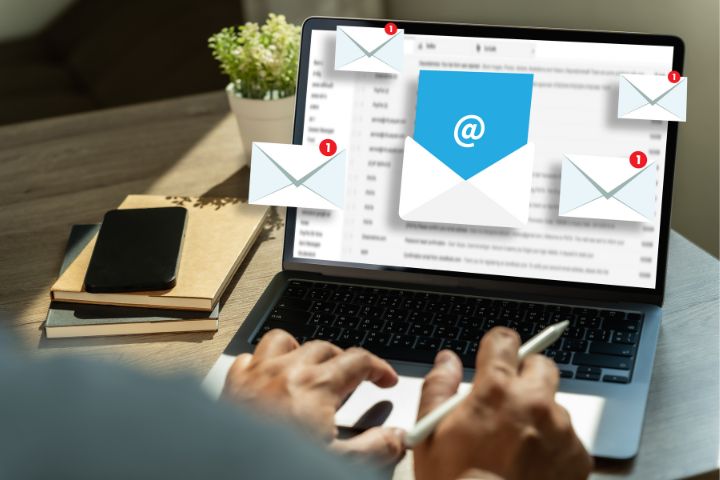Email Marketing remains one of the most consistent ways of establishing audience relationships, raising awareness, and stimulating direct action. Whether one is working with businesses or individual buyers, the underlying methodologies are much the same—albeit the implementation is very different.
The article deconstructs the strategic components needed to frame solid campaigns for each audience type and identifies tools that assist Indian marketers in doing so.

Understanding the Audience
The initial and most important step in any Email Marketing campaign is to know who you’re writing to. The expectations and requirements of business professionals differ greatly from those of consumers.
For B2B
- Messages need to inform, counsel, or aid in decision-making
- Communication needs to be factual and industry-related
- Recipient targets may be executives, buyers, or department heads
For B2C
- Content needs to inspire, entertain, or provide instant value
- Messaging tends to be shorter and emotive
- The audience is wide-ranging—ranging from young consumers to working professionals
A strong Email Marketing Software supports proper audience segmentation, which is critical for effective communication.
Content Strategy and Messaging
Writing that addresses your audience directly boosts engagement and trust. B2B and B2C both require a different tone and intent.
In B2B Campaigns
- Offer informative content like whitepapers or case studies
- Insert industry reports or trends
- Utilize formal tone and organized formats
In B2C Campaigns
- Emphasize storytelling or product-based images
- Insert holiday promotions or limited-time discounts
- Utilize friendly, casual tone and bold visuals
A versatile Email Marketing Tool facilitates it to create templates that fit varying styles.
Subject Lines That Encourage Opens
A subject line is your first impression—it determines if an email is opened or ignored.
Crafting for B2B
- Be clear and professional
- Use industry language in phrases
- Don’t use jargon that might confuse new leads
Crafting for B2C
- Use playful words and catchy phrases
- Use urgency or exclusivity as needed
- Test personalization like names or activity in the last few days
Advanced Email Marketing Tools have A/B testing capabilities to compare various subject lines to bring maximum results.
Email Layout and Design
Your email’s look makes up part of the message being delivered and what action the reader takes.
B2B Design
- Keep visuals to a minimum, clarity and hierarchy are key
- Add simple click-to-do buttons for actions such as “Book a Demo”
- Make content mobile and printer-friendly
B2C Design
- Utilize colorful banners, product pictures, and motion graphics
- Call out discounts and include visual urgency (countdowns, etc.)
- Design for mobile-first readability
With the proper Email Marketing Platform, it’s simple to create mobile-friendly, good-looking layouts for each audience.
Timing and Frequency
Knowing when and how often to send emails is another key component of Email Marketing success.
B2B Schedule
- Morning weekdays are best for professionals
- Cap emails at 1–2 times a week to stay on point
- Make use of event-based triggers such as webinars or business expos
B2C Schedule
- Evenings and weekends tend to do better
- Frequency can be greater—particularly for sales or content series
- Sync emails with holidays, new releases, or product updates
Intelligent Email Marketing Software enables you to schedule automatically on a campaign basis for delivery on time.
Personalization and Segmentation
Targeting particular user segments and tailoring content enhances interaction and loyalty.
In B2B Context
- Segment contacts by industry, job function, or company size
- Personalize with company names or recent engagement data
- Monitor interactions with technical content
In B2C Context
- Segment by age, location, interests, or shopping behavior
- Personalize offers based on browsing or purchase history
- Insert customer names and preferences directly in the message
Any decent Email Marketing Tool should allow dynamic fields and behavioral segmentation.
Automation Workflows
Automation assists in having consistent communication and minimizing manual labor.
B2B Examples
- New client or lead onboarding series
- Monthly industry content newsletters
- Reminders of booked meetings or trial expirations
B2C Examples
- Cart abandonment recovery emails
- Birthday or anniversary offers
- Post-purchase feedback requests
Selecting the proper Email Marketing Platform makes it easy to automate these flows with little setup.
Monitoring Performance
Monitoring performance assists in refining strategy and calculating campaign worth.
Metrics to Monitor in B2B
- Open rates and click-throughs by company size or industry
- Lead qualification through gated content
- Time-to-close conversions from email touchpoints
Metrics to Monitor in B2C
- Revenue generated per email sent
- Discount code redemptions
- Subscriber list growth over time
Your Email Marketing Software should offer easy-to-understand dashboards with exportable reports for monitoring these metrics.
Compliance and Ethics
Respecting the regulations guards your brand and audience trust.
- Use unsubscribe links in all your emails
- Don’t use deceptive subject lines or artificial urgency
- Carefully store data and comply with legal consent
Compliance features embedded within a professional Email Marketing Platform make this easy and ensure you remain audit-ready.
Popular Email Marketing Tools in the Indian Market
The success of your campaigns also largely relies on the software that you use. Below are a few well-known names that have Indian businesses’ support:
The Connect More
The Email Marketing Tool is compatible with Indian businesses across B2B and B2C environments. With simple list management, accessible templates, region compatibility, and real-time insights, it can handle campaigns of all sizes.
It provides:
- Customizable templates
- Smart automation workflows
- Segmentation features
- Support for local compliance standards
This Email Marketing Software is particularly useful for Indian users seeking reliability and control.
Final Thoughts
Email marketing that addresses their audience directly can create long-term relationships, initiate conversations, and drive sales or partnerships. Although the tools are usually the same, the application differs based on whether you’re marketing to businesses or end consumers.
A great Email Marketing Platform empowers you to build, send, track, and optimize campaigns with ease. With an emphasis on content tailored to your audience, intelligent scheduling, and responsible communication, brands can keep cultivating authentic engagement via email—regardless of market.
Whether you’re launching product drives or professional outreach efforts, begin with the best Email Marketing Tool and clean strategy—and let your emails drive results.

